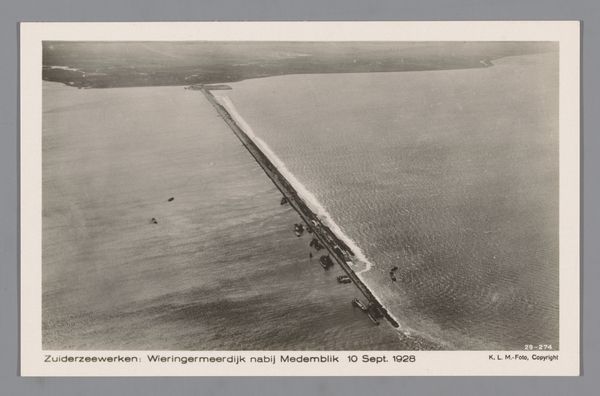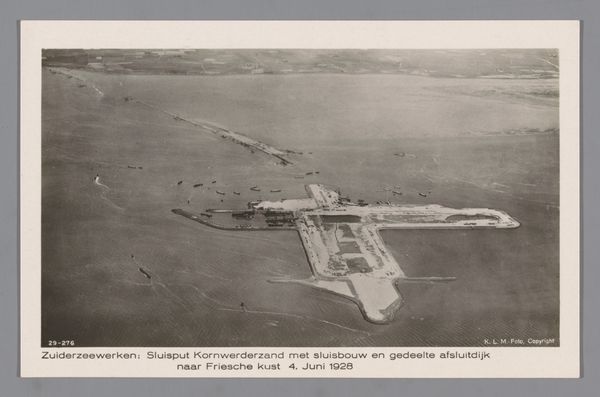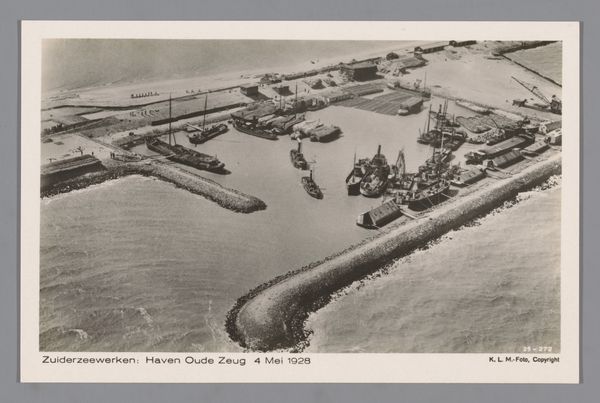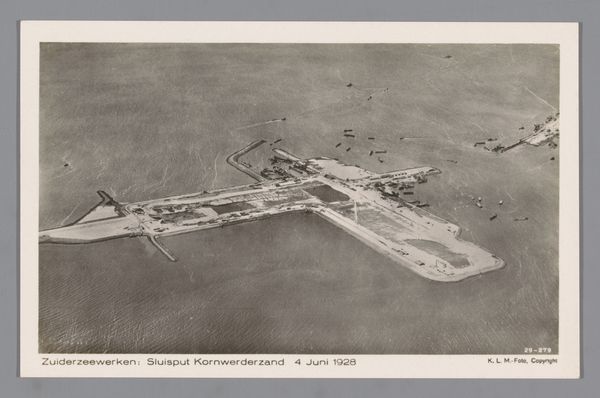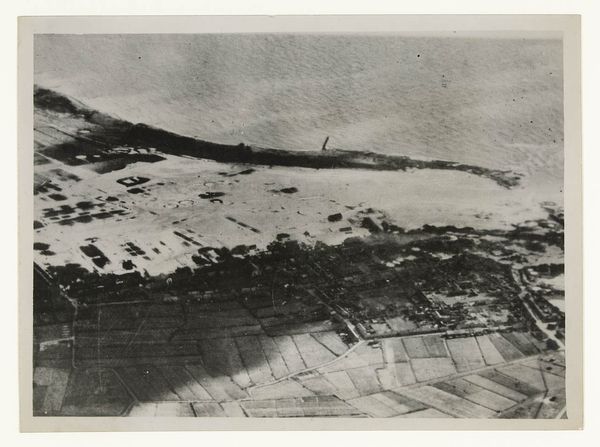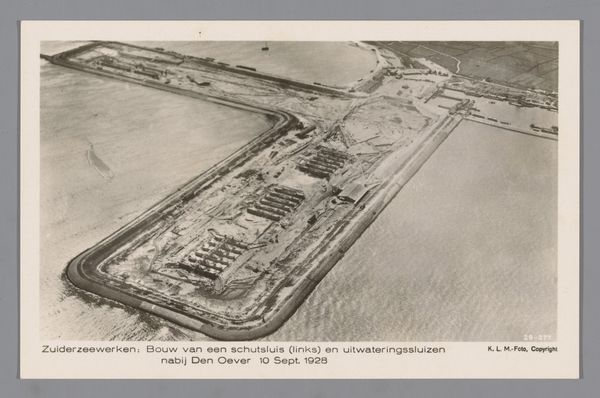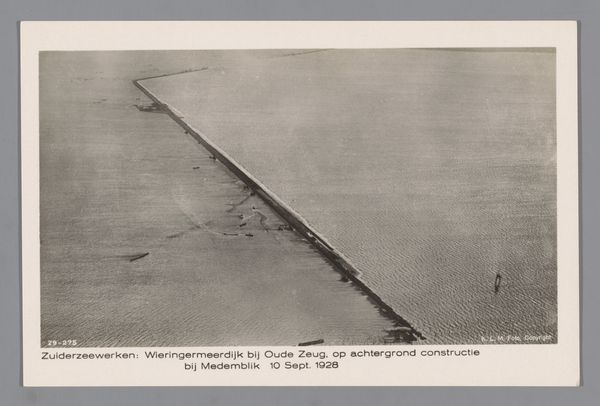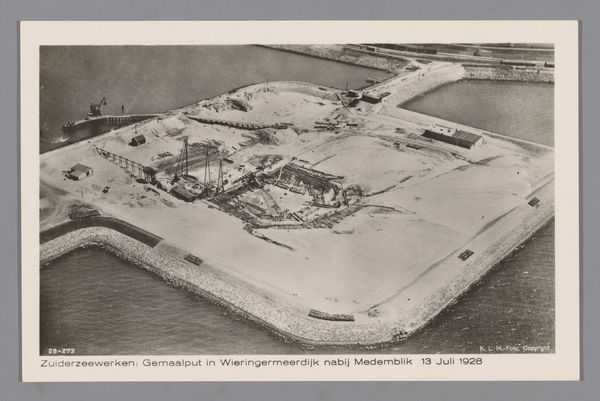
Zuiderzeewerken: Dijk om het boezemmeer ten Z. van Wieringen 10 sept. 1928 Possibly 1928 - 1929
0:00
0:00
photography
#
landscape
#
photography
#
realism
Dimensions: height 91 mm, width 140 mm
Copyright: Rijks Museum: Open Domain
Curator: Looking at this photo, I immediately feel a sense of vastness and a bit of somberness from the grayscale and high-angle perspective. Editor: Exactly. This photograph, possibly taken between 1928 and 1929 by Fototechnische Dienst K.L.M., captures part of the Zuiderzee Works. The title, "Zuiderzeewerken: Dijk om het boezemmeer ten Z. van Wieringen 10 Sept. 1928," translates to “Zuiderzee Works: Dike around the reservoir south of Wieringen, Sept. 10, 1928.” It documents the construction of a dike. The black and white choice really places the focus on human intervention on landscape, don’t you agree? Curator: Absolutely. I notice the strong diagonal line formed by the newly built dike that is visually cutting into the flat, rectangular landscape of the field pattern that contrast with organic land in a fascinating man-nature symbol, doesn’t it? Editor: Yes, that geometrical perspective in combination with a bird’s-eye-view conveys such stark sense of control over nature. What does it say about progress and modernization, wouldn’t you wonder? Curator: It raises so many crucial questions about ecological ethics, as well as class and social hierarchies in land reclamation. Who truly benefits, and at what expense? We should not only consider these infrastructure project under the lens of technological triumph and the end result of progress but the impact that it would produce throughout the landscape, the people, and non-human entity and communities. Editor: Precisely. When we engage with images like this, it is not enough to only consider visual language and historical facts, it becomes essential that we discuss these projects as parts of our understanding of power relations and ecological consequence. Curator: Thank you for bringing in fresh perspective that helps consider new narratives, shifting and expanding the context of our viewing practice. Editor: It was crucial, because discussing symbols of national development through social lens helps unveil multiple perspectives about identity and power.
Comments
No comments
Be the first to comment and join the conversation on the ultimate creative platform.
